The reading habit is fast dying…its decline hastened by, among other things, our decreasing attention spans (thank you Twitter) and availability of lesser alternatives (thank you cable television). Having said that, for many, reading has also made a transition – from paperback to electronic versions. I prefer the e-book mainly for its convenience (try carrying around seven thousand books) and additional features like inbuilt dictionaries and note-taking. It is this convenience that has got me to read more..and I did read quite a bit in 2014.
Here is my pick of the lot, and it includes non-fiction (mostly) and one exceptional piece of fiction. Again, these are books that I read in 2014, not necessarily books that were released in 2014.
In no particular order.
Bending Adversity – Japan and the art of survival – by David Pilling
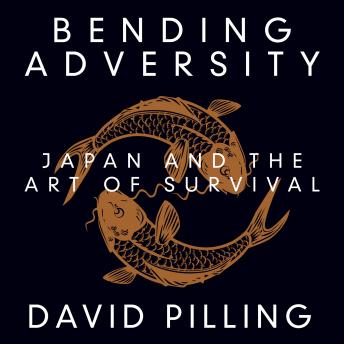 Japan has always been a sort of enigma. Certain aspects of its society remain quizzical, often misunderstood, yet there is one aspect of Japanese culture that everybody is univocal about – their ability to deal with adverse circumstances. Author David Pilling attempts to dig deeper, using the devastating tsunami that hit Japan in 2011 as an initial backdrop. He goes on to analyze many milestones in Japan’s history to investigate what it is that enables the Japanese to keep up their spirits, even when all hope seems lost. Sample this:
Japan has always been a sort of enigma. Certain aspects of its society remain quizzical, often misunderstood, yet there is one aspect of Japanese culture that everybody is univocal about – their ability to deal with adverse circumstances. Author David Pilling attempts to dig deeper, using the devastating tsunami that hit Japan in 2011 as an initial backdrop. He goes on to analyze many milestones in Japan’s history to investigate what it is that enables the Japanese to keep up their spirits, even when all hope seems lost. Sample this:
Especially for Japanese men, companies play the role of a religious community,’ one Japanese academic told me.26 There were company songs, company dormitories, company holidays and, of course, lots of company overtime and company drinking sessions. Matsushita’s official song, performed by workers wearing identical grey jumpsuits, went:
We will send our products to the people of the world
Our hard work and toil like the sound of water
Gushing from the spring; industrial progress, industrial progress
Number one for harmony, Matsushita Electric
Excerpt From: David, Pilling. “Bending Adversity: Japan and the Art of Survival.” Penguin Group US.
Think Like a Freak – by Stephen J. Dubner, Steven D. Levitt
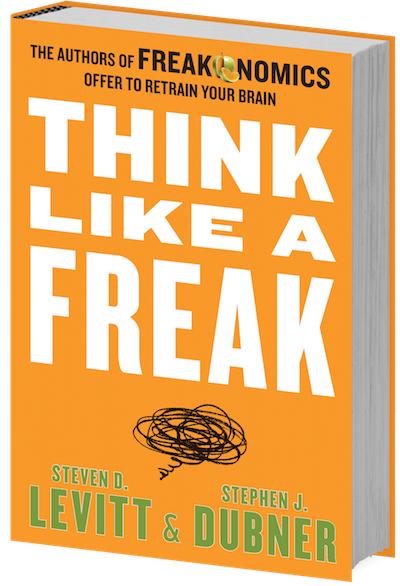 Of course you have heard of Freakonomics. And then Super Freakonomics. The author duo is back with the final act of their trilogy (or so I think it is), thinking like a freak. This time, they don’t dazzle you with their quirky take on economics. They teach you how they did it, how they thought different, and how you can think like them. And of course, in their own inimitable style!
Of course you have heard of Freakonomics. And then Super Freakonomics. The author duo is back with the final act of their trilogy (or so I think it is), thinking like a freak. This time, they don’t dazzle you with their quirky take on economics. They teach you how they did it, how they thought different, and how you can think like them. And of course, in their own inimitable style!
The book cites many examples, from soccer kicks to stock market analysis, some of which frankly sounded quite simplistic and potentially debatable. However, the pros far overweigh the cons and as one breezes through the book, one ends up chucking with laughter and then pondering a while…
““Trillions of dollars have been spent on worldwide education reforms, usually focused on overhauling the system in some way—smaller classrooms, better curricula, more testing, and so on. But as we noted earlier, the raw material in the education system—the students themselves—are often overlooked. Might there be some small, simple, cheap intervention that could help millions of students? One in four children, it turns out, has subpar eyesight, while a whopping 60 percent of “problem learners” have trouble seeing. If you can’t see well, you won’t read well, and that makes school extra hard. And yet even in a rich country like the United States, vision screening is often lax and there hasn’t been much research on the relationship between poor vision and school performance.”
Excerpt From: Steven D. Levitt. “Think Like a Freak: The Authors of Freakonomics Offer to Retrain Your Brain.” HarperCollins.
The Science of Interstellar – by Kip Thorne
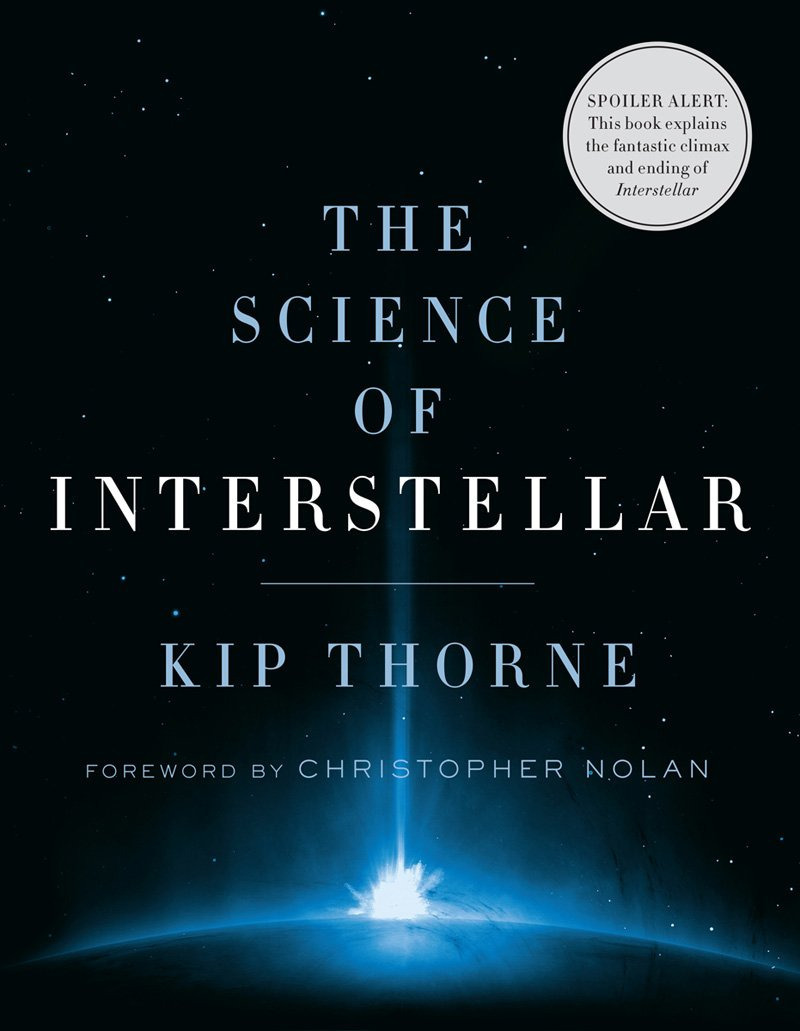 This book is kind of a double deal – you have to see the movie (Interstellar) before you read the book. Anyways, I don’t know many (or rather, any) people who have not seen arguably one the best science fiction movies to come out of Hollywood, and hence I assume that you have. I also think that when the DVD of Interstellar comes out, this book will mostly be included in the package.
This book is kind of a double deal – you have to see the movie (Interstellar) before you read the book. Anyways, I don’t know many (or rather, any) people who have not seen arguably one the best science fiction movies to come out of Hollywood, and hence I assume that you have. I also think that when the DVD of Interstellar comes out, this book will mostly be included in the package.
Back to the book. There were a lot of puzzling concepts in the movie that stumped even an avid science aficionado like me, and so this book came as a blessing. Calttech physicist Kip Thorne, who served as the science consultant for Interstellar, breaks down the science parts bit by bit, putting all the concepts explained into three buckets – truth, educated guess and speculation. He then goes on to deconstruct the most intriguing bits in a language that us commoners can digest (although in some cases, he can’t resist going too deep into the subject). There are a couple of chapters that you can skip, for they are too theoretical and detailed, but overall, the book is enjoyable to an extent that once your finish it, you would want to see the movie once again, this time as an informed audience! Go read it!
“When Christopher Nolan told me how much slowing of time he wanted on Miller’s planet, one hour there is seven years back on Earth, I was shocked. I didn’t think that possible and I told Chris so. “It’s non-negotiable,” Chris insisted. So, not for the first time and also not the last, I went home, thought about it, did some calculations with Einstein’s relativistic equations, and found a way. I discovered that, if Miller’s planet is about as near Gargantua as it can get without falling in, and if Gargantua is spinning fast enough, then Chris’s one-hour-in-seven-years time slowing is possible.”
…..
“I found that Chris’s huge slowing of time requires Gargantua to spin almost as fast as the maximum: less than the maximum by about one part in 100 trillion. In most of my science interpretations of Interstellar, I assume this spin.” ,
Excerpt From: Kip, Thorne. “The Science of Interstellar.” W. W. Norton & Company.
Look who’s back – by Timur Vermes
Was originally published in Germany (Er ist wieder da). Involves Hitler (ouch).
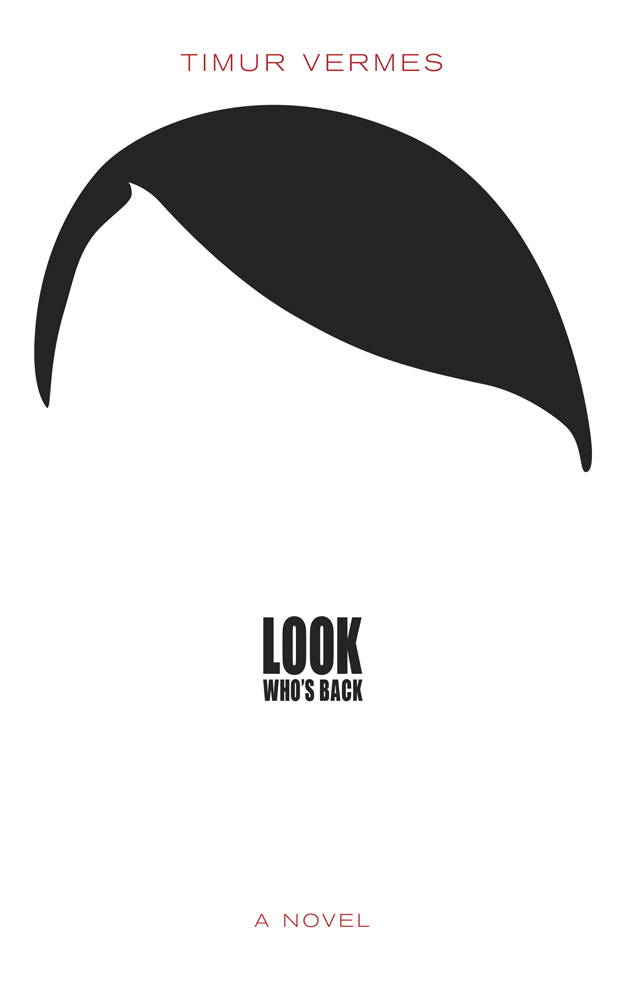 No, this is no Mein Kampf. Far from it. Its fiction, for one. Far from it. Author Timur Vermes takes a pariah figure, adds a liberal dose of satire, a bit of history, and a whole load of imagination, shakes it well, serves fresh! So what is the book about? Well, Adolf Hitler in full regalia wakes up on a patch of wasteland in Berlin…in 2011. Having failed to find his bunker, he takes up temporary residence in a newspaper kiosk. There he is discovered by some TV producers, who take him to be a Hitler impersonator of rare method-acting genius. Soon he becomes the star of their satirical programme. His rants against foreigners and the welfare state are both consumed as comedy and secretly admired by a German public fed up with modern politics. What happens next? Read the book to find out!
No, this is no Mein Kampf. Far from it. Its fiction, for one. Far from it. Author Timur Vermes takes a pariah figure, adds a liberal dose of satire, a bit of history, and a whole load of imagination, shakes it well, serves fresh! So what is the book about? Well, Adolf Hitler in full regalia wakes up on a patch of wasteland in Berlin…in 2011. Having failed to find his bunker, he takes up temporary residence in a newspaper kiosk. There he is discovered by some TV producers, who take him to be a Hitler impersonator of rare method-acting genius. Soon he becomes the star of their satirical programme. His rants against foreigners and the welfare state are both consumed as comedy and secretly admired by a German public fed up with modern politics. What happens next? Read the book to find out!
This is the only piece of fiction on my list, and that itself speaks volumes about how much I enjoyed this book. It came across as novel and imaginative, and very very very funny! The way Hitler views modern society and its quirks, all so alien to him, is comical and I just couldn’t get enough of it. Actually, I was a bit sad when it finished! Would love to see a movie adaptation, but then, don’t know if this would happen. Anyways, highly recommended!
“What especially pleased me, however, was that newspapers and periodicals, indeed every possible form of information was accessible. It was like a vast library with unrestricted opening hours. How I could have done with that! How many hard days had I spent making tough military decisions, after which all I wanted was to indulge in a little reading at two o’clock in the morning. Admittedly, Bormann did his best, but how many books can a simple Reichsleiter procure? Besides, space in the Wolf’s Lair was not unlimited. This wonderful technology, on the other hand, which is called the “Inter-network”, of “offered absolutely everything all day long and at night too. All one had to do was to search for it in a contraption called “Google” and touch the result with that magnificent mouse. Before long I established that I kept arriving at the same address: a proto-Germanic reference work called Vikipedia, an easily recognisable compound of ‘encyclopedia’ and those ancient Germans with exploration in their blood, the Vikings.
” Excerpt From: Vermes, Timur. “Look Who’s Back.” Quercus
At Home – A Short History of Private Life – by Bill Bryson
 Bill’s book – A Short History of Nearly Everything – is on my list of books that everyone should read before they die (lets say once in a lifetime instead, die sounds to sombre). At Home nearly makes it to that list. The author takes up a topic that we don’t often think about often – the history of houses. How did our ancestors live once they came out their caves? Did typical houses have the same kind of rooms as they do now? The answers will startle you. Bill doesn’t stop at that…he uses the opportunity to dig deeper into the food habits of our ancestors, the way the bathed, the way they slept and even the way they relieved themselves! (the bathroom/toilet was a bit of a shock to me frankly. No way I would have survived in 17th century England).
Bill’s book – A Short History of Nearly Everything – is on my list of books that everyone should read before they die (lets say once in a lifetime instead, die sounds to sombre). At Home nearly makes it to that list. The author takes up a topic that we don’t often think about often – the history of houses. How did our ancestors live once they came out their caves? Did typical houses have the same kind of rooms as they do now? The answers will startle you. Bill doesn’t stop at that…he uses the opportunity to dig deeper into the food habits of our ancestors, the way the bathed, the way they slept and even the way they relieved themselves! (the bathroom/toilet was a bit of a shock to me frankly. No way I would have survived in 17th century England).
Trivia abound. Did you know that the main catalyst for biological research was not some scientific curiosity, but the fact that aristocrats wanted to make their gardens more exotic than anyone else’s? Or that for much of history, a bed was, for most homeowners, the most valuable thing they owned?
I just wish that we had such books as kids, when learning history. It would have been so much more fun!
“Then in the Middle Ages the spread of plague made people consider more closely their attitude to hygiene and what they might do to modify their own susceptibility to outbreaks. Unfortunately, people everywhere came to exactly the wrong conclusion. All the best minds agreed that bathing opened the epidermal pores and encouraged deathly vapors to invade the body. The best policy was to plug the pores with dirt. For the next six hundred years most people didn’t wash, or even get wet, if they could help it—and in consequence they paid an uncomfortable price. Infections became part of everyday life. Boils grew commonplace. Rashes and blotches were routine. Nearly everyone itched nearly all the time. Discomfort was constant, and serious illness was accepted with resignation.”
Excerpt From: Bill, Bryson. “At Home.” Knopf Doubleday Publishing Group.
The Future of the Mind – by Michio Kaku
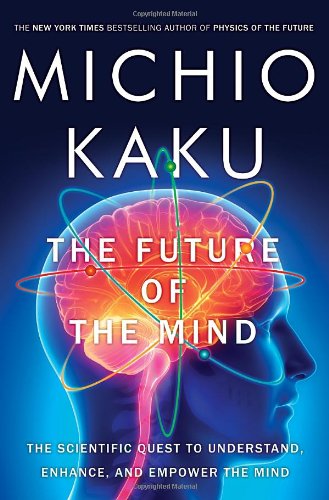 The human mind accounts for less than 2% of our body weight, but devours 20% of our daily energy intake…food for thought…literally??
The human mind accounts for less than 2% of our body weight, but devours 20% of our daily energy intake…food for thought…literally??
Michio Kaku has been a favourite, for the way he takes cutting edge science and explains it to lesser mortals like us in a way that we can understand. His book – Physics of the Future – remains an excellent layman’s guide to what lies ahead in the technology space, for the next one hundred years.
In this book, Kaku deftly explains how scientists are now beginning to understand the mysteries of the human brain and making small, but steady, progress in the direction of completely unraveling how the brain process, stores and retrieves information. Kaku explains complex topics like telepathy, telekinesis, mind control and artificial consciousness to set up one wild ride, culminating in the ultimate question – can we live on forever? (the answer…read it in the book!)
This isn’t just food for thought. Its a gourmet meal…
“But although dreams have always haunted and mystified us, only in the last decade or so have scientists been able to peel away the mysteries of dreams. In fact, scientists can now do something once considered impossible: they are able to take rough photographs and videotapes of dreams with MRI machines. One day, you may be able to view a video of the dream you had the previous night and gain insight into your own subconscious mind. With proper training, you might be able to consciously control the nature of your dreams. And perhaps, like DiCaprio’s character, with advanced technology you might even be able to enter someone else’s dream.”
Excerpt From: Kaku, Michio. “The Future of the Mind.” Knopf Doubleday Publishing Group.
The Organized Mind – Thinking Straight in the Age of Information Overload – by Daniel J. Levitin
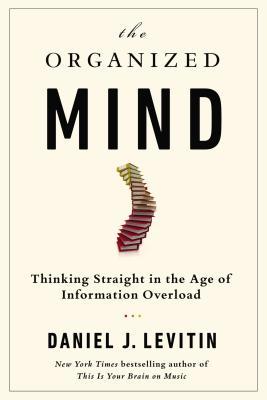 I don’t generally like self-help books, for reasons that go beyond the scope of this article. The Organized Mind is an exception. As the title suggests, Daniel has made the contents of this book very relevant to the person of today, who lives on a steady diet of television, Wikipedia and Facebook. How many times have we felt that even though we have so much technology at our disposal, we were better off twenty years ago? Is technology becoming a bane ?
I don’t generally like self-help books, for reasons that go beyond the scope of this article. The Organized Mind is an exception. As the title suggests, Daniel has made the contents of this book very relevant to the person of today, who lives on a steady diet of television, Wikipedia and Facebook. How many times have we felt that even though we have so much technology at our disposal, we were better off twenty years ago? Is technology becoming a bane ?
Daniel takes the straight route, one of how we can adapt ourselves to this ever-growing web of technology, rather than trying to be utopian and shun it altogether. No master plans here, just simple steps prescribed. The beauty of the book is that once you read it, the steps seem pretty obvious! Daniel also debunks the theory of multitasking, saying that the brain is wired in a way so as to concentrate on only one task at a time, and when we do more, it in essence just shifts rapidly from one task to the next, hence tiring us and giving us the false sense of accomplishment.
Much recommended!
“For most of human history, we did not have clocks or indeed any way of accurately reckoning time. Meetings and ritual get-togethers would be arranged by referencing obvious natural events, such as “Please drop by our camp when the moon is full” or “I’ll meet you at sunset.” Greater precision than that wasn’t possible, but it wasn’t needed either. The kind of precision we’ve been accustomed to began after railroads were built. You might think the rationale is that railroad operators wanted to make departure times accurate and standardized as a convenience for customers, but it really grew out of safety concerns. After a series of railroad collisions in the early 1840s, investigators sought ways to improve communication and reduce the risk of accidents.”
Excerpt From: Levitin, Daniel J. “Organized Mind : Thinking Straight in the Age of Information Overload (9780698157224).” Penguin USA.

Reblogged this on SPEAKZEASY and commented:
Again, a simple list of books that everyone can read and enjoy:)